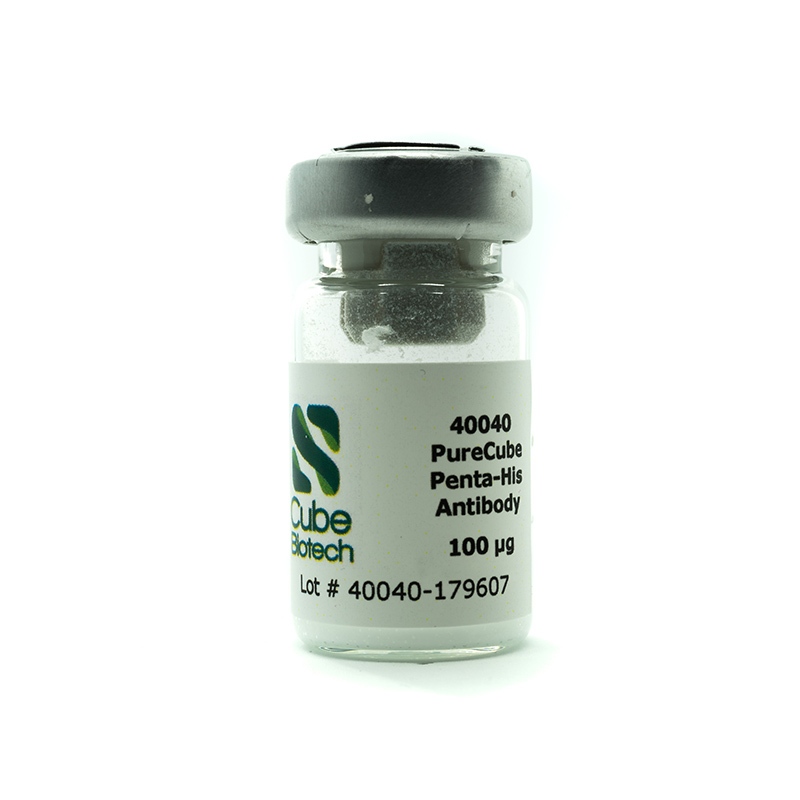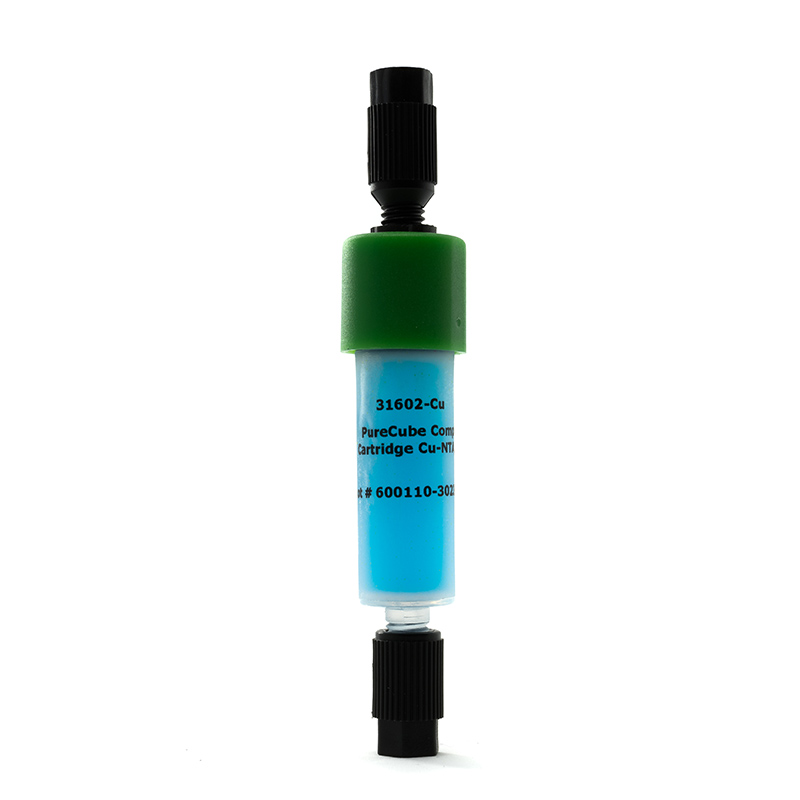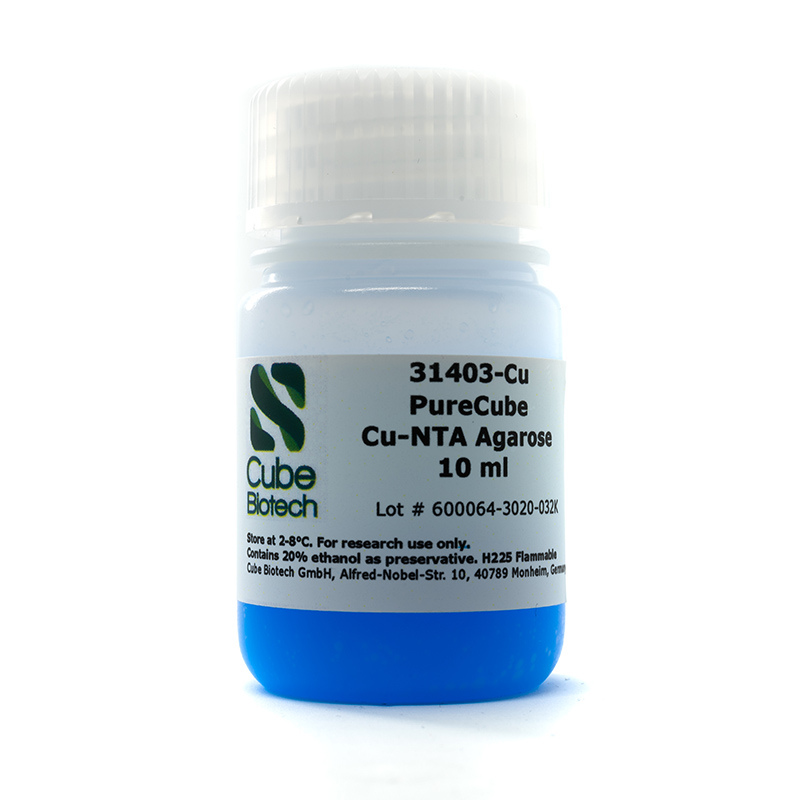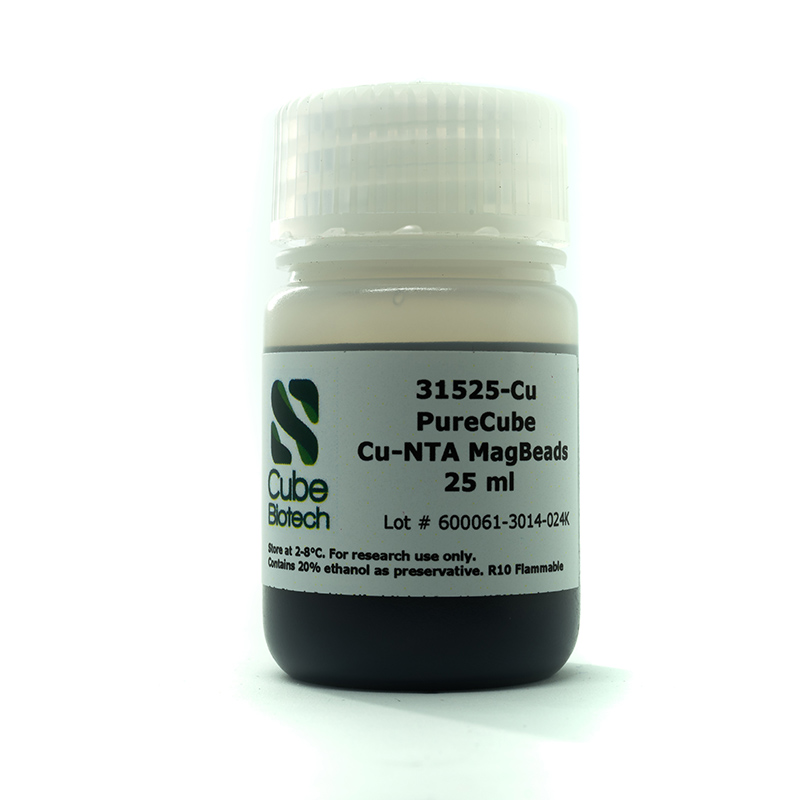Cu-NTA
Cu-NTA is a term that refers to a copper ion that has been coupled to nitrilotriacetic acid (NTA). Cu-NTA can then be coupled to agarose or magnetic beads for Immobilized Metal Chelate Affinity Chromatography, short IMAC. This is a purification method for two purposes:
- The purification of his tagged proteins
- The enrichment of copper binding proteins
-
Products
- Membrane Protein Stabilization
- Protein Purification Products
- Active Proteins
- Proteomics
- Cell-Free Lysates
- Plastic & Accessories
Filter




